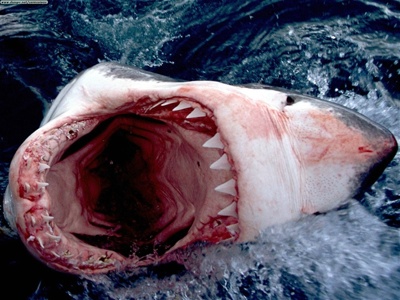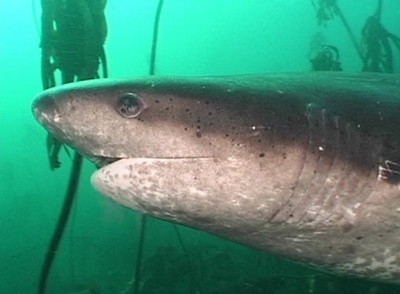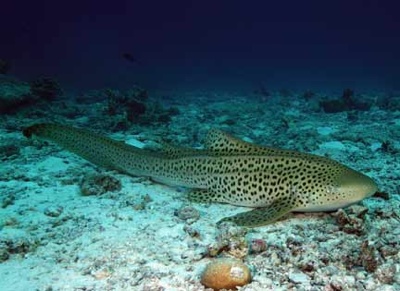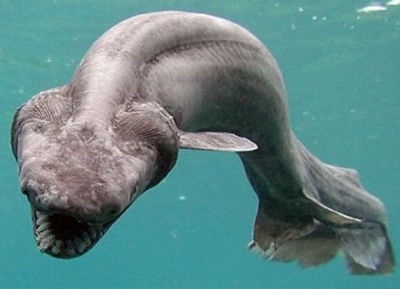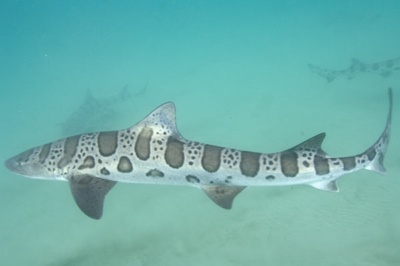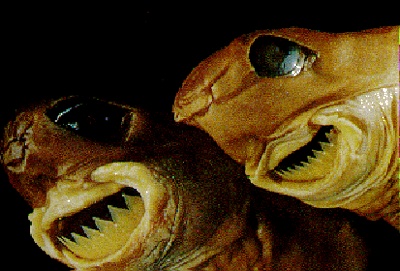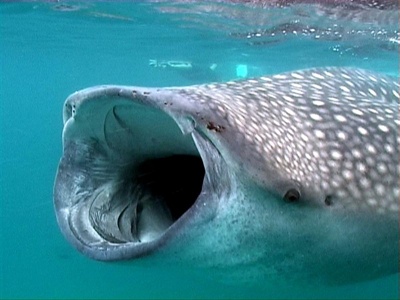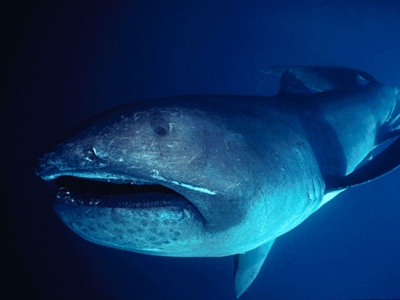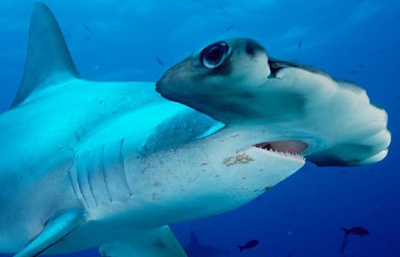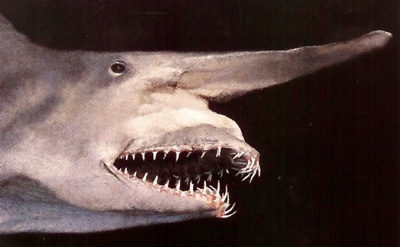 Mysteries
Mysteries  Mysteries
Mysteries  History
History 10 Surprising Stories About the Texas Rangers
 Humans
Humans 10 Philosophers Who Were Driven Mad by Their Own Theories
 Miscellaneous
Miscellaneous 10 Video-Game-Worthy Weapons and Armors from History
 Weird Stuff
Weird Stuff 10 Psychics Who Accurately Predicted Wartime Events
 The Arts
The Arts 10 Pieces of Art Inspired by a Broken Heart
 Health
Health 10 Science Fiction-Sounding New Medical Treatments
 History
History 10 Surprising Facts About the Father of Submarine Warfare
 Space
Space Ten Astonishing New Insights into Alien Worlds
 Weird Stuff
Weird Stuff 10 Bizarre Summer Solstice Rituals Still Practiced Today
 Mysteries
Mysteries Top 10 Haunting Facts About the Ghost Ship MV Alta
 History
History 10 Surprising Stories About the Texas Rangers
 Humans
Humans 10 Philosophers Who Were Driven Mad by Their Own Theories
Who's Behind Listverse?

Jamie Frater
Head Editor
Jamie founded Listverse due to an insatiable desire to share fascinating, obscure, and bizarre facts. He has been a guest speaker on numerous national radio and television stations and is a five time published author.
More About Us Miscellaneous
Miscellaneous 10 Video-Game-Worthy Weapons and Armors from History
 Weird Stuff
Weird Stuff 10 Psychics Who Accurately Predicted Wartime Events
 The Arts
The Arts 10 Pieces of Art Inspired by a Broken Heart
 Health
Health 10 Science Fiction-Sounding New Medical Treatments
 History
History 10 Surprising Facts About the Father of Submarine Warfare
 Space
Space Ten Astonishing New Insights into Alien Worlds
 Weird Stuff
Weird Stuff 10 Bizarre Summer Solstice Rituals Still Practiced Today
Top 10 Incredible Sharks
Despite the fact that most sharks are harmless, the very thought of them strikes fear in most of us. Swimming at the beach just hasn’t been the same since the film Jaws came out. This list looks at ten sharks that are incredible due to their appearance, ability, or uniqueness in the animal kingdom. If you wish to share other incredible sharks, do so in the comments.
The great white shark is an exceptionally large lamniform shark found in coastal surface waters in all major oceans. Reaching lengths of more than 20 ft and weighing up to 4,938 lb, the great white shark is arguably the world’s largest known predatory fish. It is the only surviving species of its genus. More than any documented attack, Peter Benchley’s best selling novel Jaws and the subsequent 1975 film adaptation directed by Steven Spielberg provided the great white shark with the image of a “man eater” in the public mind. While great white sharks have been responsible for fatalities in humans, they typically do not target humans as prey: for example, in the Mediterranean Sea there were 31 confirmed attacks against humans in the last two centuries, only a small number of them deadly. Many incidents seem to be caused by the animals “test-biting” out of curiosity.
Cow sharks are considered the most primitive of all the sharks, because their skeletons resemble those of ancient extinct forms, with few modern adaptations. Their excretory and digestive systems are also unspecialised, suggesting that they may resemble those of primitive shark ancestors. Their most distinctive feature, however, is the presence of a sixth, and sometimes a seventh gill slit, in addition to the five found in all other sharks.
The zebra shark is a species of carpet shark. Adult zebra sharks are distinctive in appearance, with five longitudinal ridges on a cylindrical body, a low caudal fin comprising nearly half the total length, and a pattern of dark spots on a pale background. During the day, zebra sharks are sluggish and usually found resting on the sea bottom, sometimes using their pectoral fins to prop up the front part of their bodies and facing into the current with their mouths open to facilitate respiration. Docile and slow-moving, zebra sharks are not dangerous to humans and can be easily approached underwater. However, they have bitten divers who pull on their tails or attempt to ride them. As of 2008 there is one record of an unprovoked attack in the International Shark Attack File, though no injuries resulted.
The frilled shark is a living fossil shark species which looks like a hideous giant eel but is actually a shark. On January 21, 2007, staff at Awashima Marine Park in Shizuoka, southwest of Tokyo, were alerted by fishermen to a ’strange eel-like fish with razor sharp teeth’. The fish was identified as a pregnant female 1.6 m frilled shark and was captured by park staff who were concerned that the shark appeared to be unhealthy. They took it out of the water and put it into a salt water tank where they filmed it and took pictures of it. The shark died a few hours after capture. The frilled shark is sometimes referred to as a living fossil partially because the species has changed little since pre-historic times. It was thought to be extinct until modern sightings in Japan.
The leopard shark is a species of houndshark found along the Pacific coast of North America from the U.S. state of Oregon to Mazatlán in Mexico. Typically measuring 3.9–4.9 ft long, this slender-bodied shark is immediately identifiable by the striking pattern of black saddle-like markings and large spots over its back, from which it derives its common name. Large schools of leopard sharks are a common sight in bays and estuaries, swimming over sandy or muddy flats or rock-strewn areas near kelp beds and reefs. They are most common near the coast, in water less than 13 ft deep. Wary and quick to flee, leopard sharks pose almost no danger to humans. There is a single record from 1955 of a leopard shark harassing a skin diver with a nosebleed, though no injuries resulted. The meat is considered excellent eating, however, leopard sharks living alongside human development may accumulate pollutants such as mercury, and pesticides.
The cookiecutter shark is a small, rarely-seen dogfish shark. It is the smallest shark on this list but its unusual eating habits earn it a place. The cookiecutter shark derived its name from its habit of removing small circular plugs (like cookie cutters) of flesh and skin from cetaceans and large fish, including other sharks. It is hypothesized that the shark attaches to its much larger prey with its suctorial lips and modified pharynx, then rotates its body to achieve a highly symmetrical cut. They are considered parasites, with hosts such as the Megamouth shark. Cookiecutters seem to be attracted to undersea electrical cables, and one may find round bite marks in them. There has been one suspected attack on a human.
The whale shark, Rhincodon typus, is a slow moving filter feeding shark that is the largest living fish species. It can grow up to 40 ft in length and can weigh up to 15 short tons. The shark is found in tropical and warm oceans and lives in the open sea and can live for about 70 years. The species is believed to have originated about 60 million years ago. Despite its enormous size, the whale shark does not pose any significant danger to humans. It is a frequently cited example when educating the public about the popular misconceptions of all sharks as “man-eaters”. They are actually quite gentle and can be playful with divers. Divers and snorkelers can swim with this giant fish without any risk apart from unintentionally being struck by the shark’s large tail fin.
The megamouth shark is an extremely rare species of deepwater shark. Since being discovered in 1976, only a few megamouth sharks have been seen with 44 specimens known to have been caught or sighted as of 2009 and three recordings on film. Like the basking shark and whale shark, it is a filter feeder, and swims with its enormous mouth wide open, filtering water for plankton and jellyfish. It is distinctive for its large head with rubbery lips. It is so unlike any other type of shark that it is classified in its own family.
The hammerhead sharks are a group of sharks so named for the unusual and distinctive structure of their heads, which are flattened and laterally extended into a “hammer” shape called a “cephalofoil”. The shark’s eyes and nostrils are at the tips of the extensions. The hammer shape of the head was thought to help sharks find food, aiding in close-quarters maneuverability and allowing the shark to turn sharply without losing stability. In late 2007 scientists discovered that hammerhead sharks can reproduce asexually through a rare method known as parthenogenesis (a direct development without the need of a sperm, similar to how social insects can reproduce). Of the nine known species of hammerhead, three can be dangerous to humans: the scalloped, great, and smooth hammerheads.
The goblin shark is a deep-sea shark. Its most distinctive characteristic is the unorthodox shape of its head. It has a long, trowel-shaped, beak-like rostrum or snout, much longer than other sharks’ snouts. Some other distinguishing characteristics of the shark are the color of its body, which is mostly pink, and its long, protrusible jaws. Goblin sharks hunt by sensing the presence of prey with electro-sensitive organs in the rostrum, or snout, due to the absence of light in the deep waters where it swims. Once a shark finds its prey, it suddenly protrudes its jaws, while using a tongue-like muscle to suck the victim into its sharp front teeth. As you can see from the image above, it is one of the most striking (and fearsome) looking sharks.
